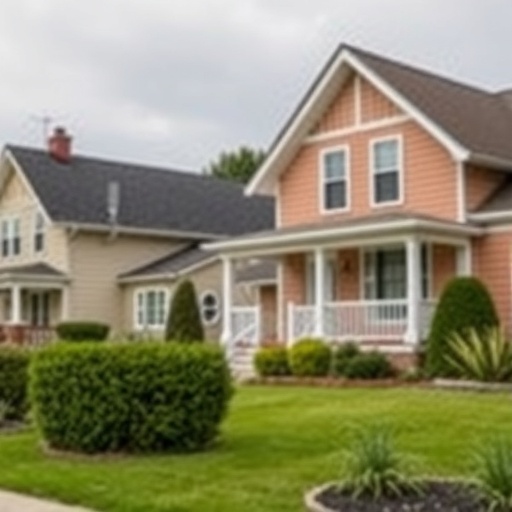U.S. Foreclosures Surge: Homeowners Grapple with Rising Costs Amid Political Gridlock and Looming 2026 Midterms
In a stark indicator of economic distress, U.S. Foreclosures have skyrocketed by 35% in the third quarter of 2024, leaving thousands of families on the brink of losing their homes as inflation and high interest rates collide with political inaction. This surge in Foreclosures underscores a deepening housing crisis that lawmakers from both parties have largely sidelined amid the recent government shutdown crisis, raising alarms about its potential to reshape the political landscape heading into the 2026 midterms.
Foreclosure Filings Spike in Heartland States, Displacing Families
The wave of foreclosures is hitting hardest in the Midwest and Southern states, where homeowners are buckling under the weight of rising costs for everything from mortgages to groceries. According to data from the Mortgage Bankers Association (MBA), foreclosure starts jumped from 4,500 in Q2 to over 6,000 in Q3, with Michigan, Ohio, and Texas leading the grim tally. In Detroit alone, over 1,200 foreclosure notices were issued last month, a 42% increase year-over-year, forcing families like the Thompsons—a working-class couple with two young children—out of their suburban home after missed payments piled up due to unexpected medical bills and stagnant wages.
“We thought we were stable,” said Maria Thompson, a nurse who lost her home last week. “But with mortgage rates at 7.5% and food prices up 20%, we just couldn’t keep up. It’s heartbreaking to see our kids’ rooms empty now.” Her story echoes thousands across the nation, where the housing crisis is not just about numbers but shattered dreams and community unraveling.
Real estate experts point to a confluence of factors fueling this spike. Post-pandemic evictions moratoriums have expired, and with unemployment ticking up to 4.2% in urban areas, more homeowners are dipping into savings that have long been depleted. The National Association of Realtors reports that median home prices have risen 15% since 2022, pricing out buyers while trapping current owners in negative equity situations. In Florida, where hurricanes exacerbated repair costs, foreclosures have surged 50%, with coastal communities facing a double whammy of natural disasters and economic pressures.
Rising Costs Squeeze Homeowners: From Mortgages to Everyday Essentials
At the core of the foreclosure surge is a relentless assault on household budgets from rising costs that show no signs of abating. Mortgage payments have increased by an average of $450 per month since 2021, according to Federal Reserve data, driven by the Federal Reserve’s aggressive rate hikes to combat inflation now hovering at 3.8%. For a typical $300,000 home loan, this translates to an additional $5,400 annually—money that many middle-class families simply don’t have amid grocery bills up 25% and energy costs climbing due to global supply chain disruptions.
Homeowners like Javier Ruiz, a construction worker in Phoenix, Arizona, are emblematic of the struggle. “Rising costs hit us from all sides,” Ruiz told reporters outside a foreclosure auction last week. “Gas is double what it was, and my property taxes jumped 18% after a reassessment. We skipped vacations, then dinners out, but it wasn’t enough.” Arizona saw a 28% uptick in foreclosures, with low-wage earners in service industries particularly vulnerable.
Economists warn that this housing crisis is exacerbating income inequality. A report from the Urban Institute highlights that 40% of U.S. households spend more than 30% of their income on housing, a threshold deemed unaffordable by HUD standards. In high-cost coastal cities like Los Angeles and New York, the figure climbs to 55%, pushing more into the foreclosure pipeline. Moreover, adjustable-rate mortgages from the early 2020s are resetting at higher rates, adding another layer of financial strain. The Consumer Financial Protection Bureau (CFPB) has noted a 20% increase in delinquency rates among subprime borrowers, many of whom are first-time minority homeowners who entered the market during the low-rate boom.
To illustrate the breadth of the issue, consider these key statistics:
- National Delinquency Rate: Up to 5.1% from 3.9% a year ago, per CoreLogic.
- Average Household Debt: $103,000, with housing-related debt comprising 70%, according to the New York Fed.
- Impact on Credit Scores: Foreclosure survivors see scores drop by an average of 150 points, hindering future renting or buying.
Without intervention, experts like Harvard’s Joint Center for Housing Studies predict that by 2025, foreclosures could displace up to 500,000 families, further straining social services and local economies.
Political Gridlock Mutes Response to Housing Woes During Shutdown
As foreclosures mount, the recent 21-day government shutdown—sparked by partisan battles over spending bills—has cast a long shadow over the housing crisis, with both Democrats and Republicans accused of prioritizing fiscal drama over homeowner relief. Lawmakers in Washington returned to session last week, but no comprehensive aid package for struggling homeowners has emerged, leaving the issue festering amid the political gridlock.
“The shutdown was a distraction that families like mine couldn’t afford,” said Senator Elena Ramirez (D-CA), one of the few voices pushing for emergency housing funds. “While Congress bickered, eviction notices went out unchecked.” Republicans, led by House Speaker Tom Harlan, have countered that budget constraints necessitate cuts to social programs, including housing subsidies, arguing that inflation control takes precedence. Yet, critics from the left point out that the $1.2 trillion infrastructure bill passed earlier this year allocated minimal funds for affordable housing, only $50 billion out of the total.
The political theater has real-world consequences. During the shutdown, federal agencies like the FHA paused processing for loan modifications, delaying relief for over 10,000 applicants. Non-profits such as Habitat for Humanity reported a 30% drop in volunteer-driven repairs due to funding uncertainties. In swing states like Pennsylvania and Wisconsin, where manufacturing job losses have compounded the housing crisis, local leaders are pleading for federal attention. “This isn’t red or blue; it’s a national emergency,” said Pittsburgh Mayor Carla Evans. “Homeowners here are one missed paycheck from the streets.”
Analysts from the Brookings Institution argue that the gridlock stems from deeper ideological divides: Democrats advocate for expanded subsidies like the proposed $100 billion Housing Trust Fund, while Republicans favor deregulation to boost supply. But with midterm campaigning already underway, both sides seem reluctant to tackle the thorny issue of rising costs, fearing backlash from donor interests in real estate and finance sectors.
2026 Midterms on the Horizon: Housing Crisis as a Voter Flashpoint
Looking ahead, the escalating housing crisis is poised to become a defining issue in the 2026 midterms, potentially swaying voters in battleground districts where foreclosures are eroding the American Dream. Polling from Gallup shows that 62% of likely voters cite housing affordability as a top concern, up from 45% in 2022, with independents particularly vocal about the need for action on rising costs.
In states like Georgia and Arizona, where narrow 2024 victories hinged on economic messaging, incumbents face tough reelection fights. “The foreclosure surge could mobilize working-class voters against inaction,” predicted political strategist Lena Torres. “If Democrats don’t deliver relief, and Republicans block it, both lose ground to populists promising radical fixes.” Early campaign ads in Ohio already feature testimonials from displaced homeowners, framing the election as a referendum on economic stewardship.
Experts foresee ripple effects beyond politics. The housing crisis threatens broader economic stability, with foreclosed properties flooding the market and depressing values by up to 10% in affected neighborhoods, per Zillow data. This could stifle consumer spending, which drives 70% of GDP, and exacerbate labor shortages as families relocate disruptively. Community advocates are calling for bipartisan measures, such as tax credits for first-time buyers and interest rate caps, but with Congress divided, progress remains elusive.
As the nation approaches 2026, the stakes couldn’t be higher. Homeowners, once pillars of suburban stability, are now the canaries in the coal mine of a faltering economy. Without swift policy shifts—perhaps spurred by electoral pressure—the foreclosure wave may swell into a tsunami, reshaping not just skylines but the very fabric of American life. Lawmakers have a narrow window to act, or risk voters holding them accountable at the ballot box.








